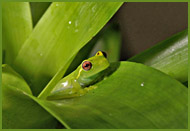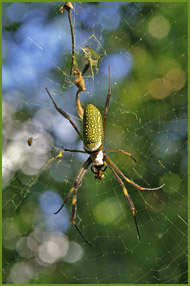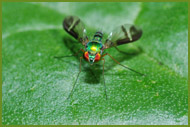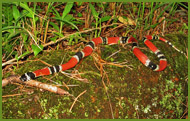Biodiversity and CBD
The Brazilian Decree Nr. 4.339 from 22nd august 2002 defines rules for the implementation of the national biodiversity policies. The principles base on those defined by the Convention on Biological Diversity CBD from 1992.
Photo (c) Petra Schmidt
The Convention on Biological Diversity - CBD
By the edict Nr. 2 from 1994 the Brazilian government accepts CBD´s text on Biological Diversity that had been authored by the United Nations Conference on Environment and Development (UNCED) in Rio de Janeiro (5th – 14th June 1992).
The Convention has three main goals, which are: conservation of biological diversity; sustainable use of its components; and fair and equitable sharing of benefits arising from genetic resources. In other words, its objective is to develop national strategies for the conservation and sustainable use of biological diversity, including appropriate financing.
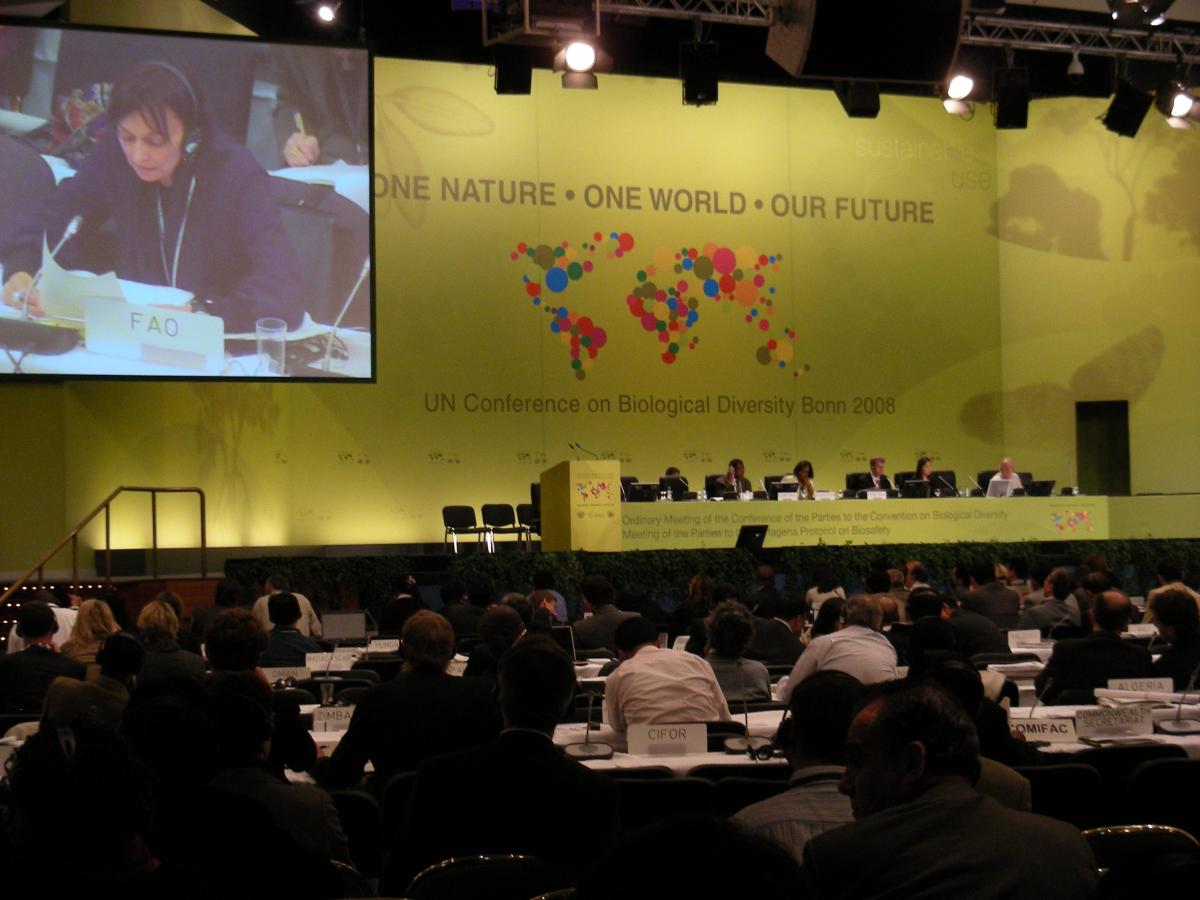 Photo (c) Rainer Fabry
Photo (c) Rainer Fabry
Some uses of terms have been defined as follows for the purposes of the Convention:
Ex-situ conservation means the conservation of components of biological diversity outside their natural habitats.
In-situ conservation means the conservation of ecosystems and natural habitats and the maintenance and recovery of viable populations of species in their natural surroundings and, in the case of domesticated or cultivated species, in the surroundings where they have developed their distinctive properties.
Ecosystem means a dynamic complex of plant, animal and micro-organism communities and their non-living environment interacting as a functional unit.
Protected area means a geographically defined area which is designated or regulated and managed to achieve specific conservation objectives.
Biotechnology means any technological application that uses biological systems, living organisms, or derivatives thereof, to make or modify products or processes for specific use.
Domesticated or cultivated species means species in which the evolutionary process has been influenced by humans to meet their needs.
Habitat means the place or type of site where an organism or population naturally occurs.
Genetic material means any material of plant, animal, microbial or other origin containing functional units of heredity.
Biological resources includes genetic resources, organisms or parts thereof, populations, or any other biotic component of ecosystems with actual or potential use or value for humanity.
Genetic resources means genetic material of actual or potential value.
Sustainable use means the use of components of biological diversity in a way and at a rate that does not lead to the long-term decline of biological diversity, thereby maintaining its potential to meet the needs and aspirations of present and future generations.
InBioVeritas´ approach relates to elements of Brazilian biodiversity policy as exposed below. These are key aspects that are meant to support the implementation of this policy:
Component 1 – Knowledge of biodiversity: comprises directives on generation, systematization and sharing of information on biological diversity. This is to support the management of biological diversity, as well as the preparation of further directives in the context of inventory, ecological research and traditional knowledge.
These directives allow carrying out inventories by determination, indexing and characterization of components of biodiversity, which leads to fostering ecologic studies, for instance on the role of living organisms for ecosystem functions and on influences of global climate change on biodiversity. This whole compound is meant to generate information aiming the elaboration of recommendations to biodiversity management.
|
Basic research on taxonomy and ecology as pillars of applied research Taxonomy is the science of identifying, organizing and classifying species, and arranging them into a classification. It investigates the most appropriate forms of organizing biological diversity and offers a common reference system. Being a modern science, it deals with genetic variability and evolutionary and ecologic matters. Representative and well organized scientific collections are a precondition for all the disciplines of biodiversity research. They form the baseline for identification of species and document their geographic dispersal and occurrence via specimen. |
Component 2 – Conservation of biodiversity: comprises directives for in-situ and ex-situ conservation of genetic variability, of ecosystems and ESS and species (especially those under threat or having economic potential). Also directives for implementation of economic and technological action in benefit of conservation of biodiversity are contemplated in this component.
|
Economic valuation of ESS InBioVeritas defined the economic valuation of ESS as one of its core areas for conservation of biodiversity. The provision of information on the economic and non-economic value of nature and its interrelation to humanity’s capability to survive demands a scientific basis. Embedding local institutions and actors into this is a precondition for interdisciplinary studies, contributing to an effective conservation of ESS in benefit of the human being. |
Component 4 – Monitoring, evaluation and mitigation of impacts on biodiversity: comprises directives for strengthening monitoring systems, assessments and prevention, as well as mitigation of impacts on biological diversity. Degraded ecosystems and overexploited components of biodiversity are to be restored.
In this way, systems and methods for monitoring and inventorying of the Brazilian biodiversity and human pressure on it are being developed and implemented (methods, indicators for monitoring). This component supports, between others, studies on impacts of fragmentation on the conservation of biodiversity and dissemination of technologies for restoration.
|
Applied research for equitable use of natural resources, planning and management of ecosystems and monitoring of biodiversity The conservation of biodiversity of Mata Atlântica demands extensive knowledge on structure and function of ecosystems. This eco-systemic approach led InBioVeritas members to maintain a field laboratory in PA of the coastal region of Paraná state. |
Component 5 –Access and Benefit Sharing ABS: adjusts directives for controlled access, aiming at sharing the benefits arising from the utilization of genetic resources in a fair and equitable way, including by appropriate access to genetic resources and by appropriate transfer of relevant technologies, taking into account all rights over those resources and to technologies, and by appropriate funding, thereby contributing to the conservation of biological diversity and the sustainable use of its components. The fair and equitable sharing of the benefits arising out of the utilization of genetic resources concerns the Brazilian population as a whole, including indigenous peoples, local and other traditional population.
Component 6 – capacity building, awareness building, information and dissemination on biodiversity: defines directives for formation, awareness building, administration and dissemination on biodiversity related matters. This involves population (indigenous, local, and traditional) in all matters concerning biodiversity and its sustainable use, including those of genetic resources or those demanding traditional knowledge.
|
Environmental education and public awareness: The dissemination of findings on nature, including information on its values, fascination and the knowledge obtained by research is another action strain of InBioVeritas. The State Museum for Natural History (Karlsruhe, Germany) fulfils this role by offering exhibitions, speeches, courses, guided tours and special events. The SPVS and the environmental foundation Boticário Group develop various programs on environmental education, capacity building and public awareness. The Federal University of Paraná forms academics and supports programs in the environmental education field. Publication and dissemination of scientific studies and information management (e.g. data bases) are further tools for sharing knowledge with society. |
Component 7 – Judicial and legal consolidation of biodiversity management: resumes means for implementation in policy; illustrates directives for strengthening infrastructure, for capacitating human capital, for accessing and transferring technologies, for incentivizing financial mechanisms, for integration into national politics and international cooperation.
|
Capacity building for young scientists Integration of students in activities, inter alia, courses and field activities, is an important contribution in professional formation. |
Links:
- Rede Mata Atlântica/Brasil: http://www.rma.org.br/v3/action/node/showNode.php?id=36
- Russel Mittermeier et al.: http://www.conservation.org.br/publicacoes/files/04_Mittermeier_et_al.pdf
- MMA Ministério do Meio Ambiente do Brasil: http://www.mma.gov.br/sitio/index.php?ido=conteudo.monta&idEstrutura=146
- Convention on Biological Diversity: http://www.cbd.int/convention/text/
- CBD Thematic Program Forest Biodiversity: http://www.cbd.int/forest/
- CBD Thematic Program Marine and Coastal Biodiversity: http://www.cbd.int/marine/
- Cross-Cutting Issue Biodiversity for Development: http://www.cbd.int/development/
- Cross-Cutting Issue Climate Change and Biodiversity: http://www.cbd.int/climate/
- MMA Brasil: http://homolog-w.mma.gov.br/index.php?ido=conteudo.monta&idEstrutura=72&idMenu=2337
- German Federal Ministry of Education and Research: http://www.bmbf.de/en/502.php
